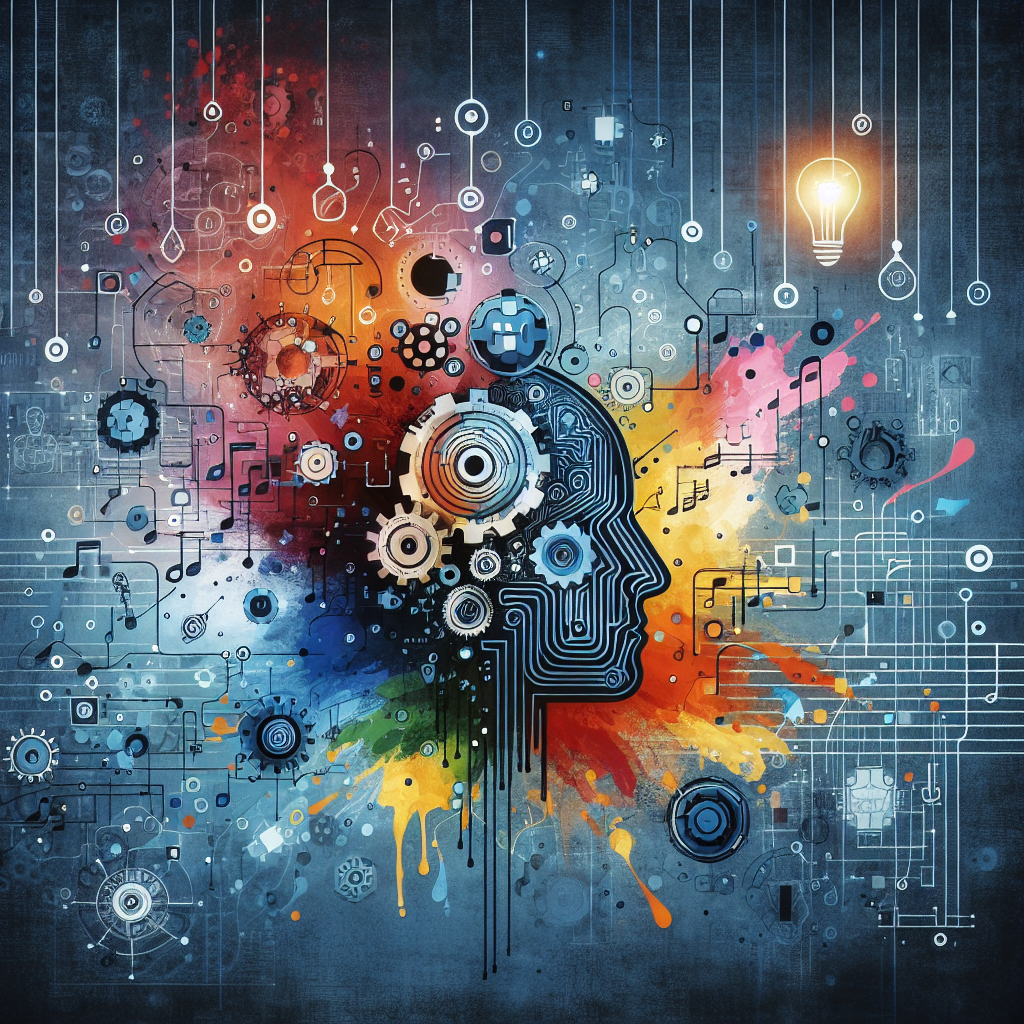AI and Creativity: Embracing the Future
In recent years, artificial intelligence (AI) has made significant advancements in various fields, including art and creativity. Many people have questioned whether AI can truly be creative, or if it is just a tool for humans to use in their creative endeavors. The answer is not so simple, as AI has the potential to revolutionize the way we think about and approach creativity.
AI and Creativity: A New Frontier
Creativity has long been considered a uniquely human trait, something that sets us apart from machines and other animals. However, with the advancement of AI technologies, this notion is being challenged. AI has the ability to analyze vast amounts of data, recognize patterns, and generate new ideas and solutions. This has led to the development of AI systems that can create music, art, literature, and even come up with new inventions.
One of the most well-known examples of AI creativity is Google’s DeepDream project, which uses neural networks to generate psychedelic images based on input photos. These images have captivated audiences around the world and sparked discussions about the nature of creativity and the role of AI in the creative process.
Another example is the AI-generated painting “Portrait of Edmond de Belamy,” which was sold at auction for over $400,000. The painting was created by a machine learning algorithm trained on a dataset of historical portraits, and it represents a new frontier in the intersection of art and technology.
AI has also been used to compose music, write poetry, and even produce films. For example, the AI-generated short film “Sunspring” was created by a neural network trained on a dataset of science fiction screenplays. The film, although nonsensical and disjointed, showcases the potential of AI to push the boundaries of creativity and storytelling.
The Role of AI in the Creative Process
While AI has made significant advancements in the field of creativity, it is important to recognize that it is still a tool that is used by humans to enhance their creative endeavors. AI can help artists, writers, musicians, and other creatives to generate new ideas, explore different styles and techniques, and push the boundaries of their craft.
For example, AI can analyze large datasets of music to identify patterns and trends that can be used to create new compositions. This can be especially helpful for musicians who are looking to break out of creative ruts or explore new genres and styles.
AI can also be used to generate visual art, such as paintings and sculptures. Artists can use AI algorithms to create digital sketches or 3D models that can serve as the basis for their final artworks. This can help artists to experiment with different ideas and concepts before committing to a final piece.
In the field of literature, AI has been used to generate poetry, short stories, and even novels. Writers can use AI algorithms to generate new plot ideas, character names, and dialogue, which can serve as inspiration for their own work. This can be especially helpful for writers who are struggling with writer’s block or looking to explore new narrative techniques.
FAQs
Q: Can AI truly be creative?
A: While AI can generate new ideas, artworks, music, and literature, it is important to recognize that it is still a tool that is used by humans to enhance their creative endeavors. AI is capable of analyzing large datasets, recognizing patterns, and generating new ideas, but it lacks the emotional depth, intuition, and consciousness that are often associated with human creativity.
Q: Will AI replace human creativity?
A: AI has the potential to revolutionize the way we think about and approach creativity, but it is unlikely to completely replace human creativity. While AI can generate new ideas and artworks, it lacks the emotional depth, intuition, and consciousness that are essential to the creative process. Human creativity is driven by our unique experiences, emotions, and perspectives, which cannot be replicated by machines.
Q: How can AI be used to enhance creativity?
A: AI can be used to enhance creativity by helping artists, writers, musicians, and other creatives to generate new ideas, explore different styles and techniques, and push the boundaries of their craft. AI can analyze large datasets of music, art, literature, and other creative works to identify patterns and trends that can be used to inspire new creations. AI can also be used to generate new ideas, artworks, music, and literature that can serve as a starting point for human creatives to build upon.
Q: What are the ethical implications of AI in creativity?
A: The use of AI in creativity raises a number of ethical implications, including questions about authorship, ownership, and the role of humans in the creative process. As AI becomes more advanced and capable of generating new ideas and artworks, it is important to consider who owns the rights to these creations and how they should be attributed. Additionally, the use of AI in creativity raises questions about the value of human creativity and the role of machines in shaping our cultural landscape.
In conclusion, AI has the potential to revolutionize the way we think about and approach creativity. While AI can generate new ideas, artworks, music, and literature, it is important to recognize that it is still a tool that is used by humans to enhance their creative endeavors. By embracing AI as a partner in the creative process, we can push the boundaries of our craft, explore new ideas and techniques, and create new forms of expression that were previously unimaginable. As we continue to explore the intersection of AI and creativity, it is important to consider the ethical implications of using AI in the creative process and to ensure that human creativity remains at the forefront of our cultural landscape.

